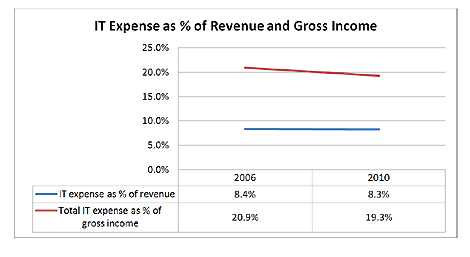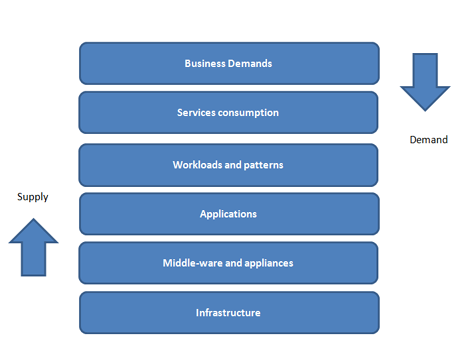Hani Elbeyali is a data center strategist for Dell. He has 18 years of IT experience and is the author of Business Demand Design methodology, which details how to align your business drivers with your IT strategy.
 HANI ELBEYALI
HANI ELBEYALIDell
Showing IT value to the enterprise is challenging. The problem is not what values IT creates—-but how to measure and communicate those values. Current practices in IT performance measurement, metrics and reporting do not help, as they concentrate on reporting how IT spends money rather than the values created from those expenditures. Business usually measure success in monetary values, profit and loss, and other attainable targets. Investments are made only in initiatives yielding positive return on investment (ROI).
However, there is no clear correlation of IT contribution to monetary dividends or gain for business. In many cases, IT projects are long term, or they start with cost recovery in mind, and have a long pay-back period. These are elements that businesses don’t like to hear. Cost re-allocation can makes things worst, because, each line of business argues about why they are paying too much. Therefore, changing the perception of IT into business driver is fundamental in measuring the value of IT.
What Would Happen if IT Impact on Business Was Reported Correctly
To best understand the dynamics of technology return to the business, we need to take a closer look at the full picture. Rubin systems published and excellent report of top financial services companies from 2006 to 2010, the report shows evidence of the value strategic technology investment can add to the business performance[1], even in downturn economy. (http://www.rubinworldwide.com/rubinww.php - can we get a direct link to the report.) Some interesting results of the report:
- IT expenses appear flat as percentage of the firm’s revenue (figure 1.0)
- IT expense as percentage of gross revenue went down by 1.6 percent (figure 1.0)
- IT expenses rise relative to business expenses
- 70 percent more compute at 9 percent expense increase
- Technology expenses up 17 percentper employee, but revenue is up 26.7 percent
- Number of IT employees remain flat (1.1M)
- Business grew 19.4 percent
 Figure 1.0
Figure 1.0
By analyzing the report we can derive two important results:
- IT helped grew the business by 20 percent and drive 26.7 percent top line revenue, while keeping its operating expenses flat
- The business continue to squeeze out and shrink the wrong operating expense—IT is only 8.4percentof the firm’s revenue
Measuring IT Based on Demand
Based on the trends provided, IT is evidently essential in creating competitive advantage, its worth noting that companies that made surgical investments in IT when economy contracted had advantage over those who didn’t. What is important is those who held back on IT had to invest at later time to catch up, but they were already behind in market position.
What I’m proposing is a simple solution called Business Demand Design (BDD) , which is a new way of developing an IT approach -- measuring IT value from a top-down and bottom-up perspective. BDD framework creates a real-time infrastructure by guiding the transformation of today’s IT practices to better align with the business as it faces a changing competitive landscape. This effectively helps delineate the benefits of IT based on each line of business, essentially providing a way to report business value creation to the business real-time and on demand.
A BDD approach would include methods to:
- Profile the demand characteristics of each line of business (LoB) so that they can be turned into design criteria when optimizing platforms for specific application workloads.
- Identify and group similar workloads types so that they can be properly mapped to applications.
- Run these workloads on the right-fit IT architecture.
Editor's note: Previously, this author wrote on Business Demand Design in this column, Demand Design: Beyond ‘Keeping the Lights On’.
Please note the opinions expressed here are those of the author and do not reflect those of his employer.
Industry Perspectives is a content channel at Data Center Knowledge highlighting thought leadership in the data center arena. See our guidelines and submission process for information on participating. View previously published Industry Perspectives in our Knowledge Library.
[1] Dr. Rubin, Rubin World Wide (http://www.rubinworldwide.com/)





